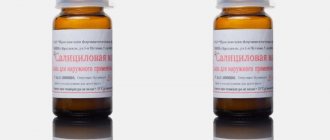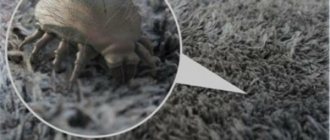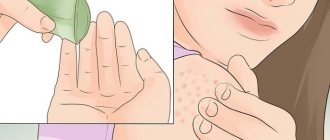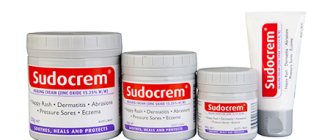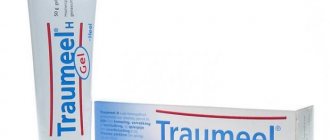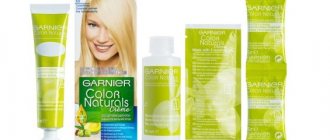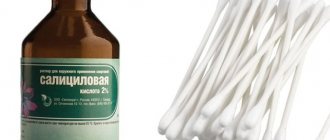Does salicylic acid help with lichen planus?
To understand how the substance “works”, let’s look at its beneficial properties:
- has an anti-inflammatory effect, which eliminates redness and excessive sensitivity;
- has an antiseptic and antimicrobial effect, destroying pathogens;
- effectively eliminates itching;
- has a keratoplasty effect - normalizes the processes of cell division and maturation;
- promotes accelerated regeneration of tissues and cells, which exfoliates the epidermis at a rapid pace.
Thanks to these properties, salicylic acid is highly effective in relieving the unpleasant symptoms of psoriasis.
Using a simple and affordable remedy, you can achieve quick and gentle softening of scales and papules, remove itching, dryness and general discomfort, cleanse the skin of lifeless layers, and reduce the intensity of the inflammatory process. With psoriasis, it is extremely important to prevent secondary infection - salicylic acid can achieve this.
Despite all its properties, the product is not able to treat psoriasis itself - it only fights unpleasant symptoms, significantly reducing their intensity or eliminating them completely.
Active substance
The main treating substance of the drug is salicylic acid. Willow bark became the basis for obtaining salicylic acid. Modern preparations containing the component are created in industrial conditions. In terms of therapeutic effect, they have a more powerful effect than natural remedies.
Salicylic acid has healing properties:
- destroys pathogenic bacteria in the affected area;
- normalizes the condition of the surface layer at the site of the disease;
- accelerates the rejection of dying cells in the diseased dermis;
- reduces irritation;
- treats inflammation of the skin;
- softens the skin.
For what types of diseases is it used?
Salicylic ointment is used for almost all types of psoriasis, including scalp.
Diseases for which the remedy is effective:
- warts;
- lichen;
- acne;
- calluses and corns;
- psoriasis;
- oily seborrhea;
- burns;
- eczema;
- ichthyosis;
- pyoderma;
- diaper rash;
- wounds, scratches and other skin lesions;
- hair loss;
- severe sweating of the feet;
- acne and boils.
But the use of the product for the problems listed below is in many cases effective only as part of complex therapy. Consultation with a doctor is mandatory - self-treatment can worsen the situation!
Indications for use
This ointment is recommended for use (in addition to psoriasis) in the presence of the following diseases and abnormalities:
- infectious and inflammatory processes of the skin,
- burns,
- eczema,
- hair loss,
- oily seborrhea,
- warts,
- furunculosis,
- fungal infection of the foot,
- ichthyosis,
- hyperkeratosis,
- atopic dermatitis,
- calluses,
- corns,
- excessive sweating of the feet,
- pityriasis versicolor,
- dysfunction of the sebaceous glands.
Instructions for the use of salicylic ointment for psoriasis
Regardless of what type of psoriasis a person suffers from, the following rules should be strictly followed:
- Salicylic ointment should be applied externally to small areas of the skin, after rinsing them with clean water and drying them. If there are wounds or serious lesions of the epidermis, it is important to pre-treat them with an antiseptic (Chlorhexidine, Hydrogen Peroxide, etc.) and clean the area of scales.
- If psoriasis is in the acute stage, inflammation is severe and/or open wounds are present, it is necessary to use 1% or 2% ointment. During periods of remission, you can be treated with more concentrated salicylic acid.
- If you need to treat a large area of skin, you should give preference to 1% or 2%.
- The ointment is applied to the affected skin in a thin layer once or twice a day, sometimes increasing the frequency to three times is permissible. Rubbing the product is prohibited.
- If it is necessary to treat an open wound, the ointment is applied to a sterile napkin, which is applied to the affected area and secured with a bandage.
- For a single treatment of one area, it is unacceptable to use more than two grams of the product.
- The healing period usually takes 6-20 days. The maximum permissible time of continuous use is four weeks.
- If the skin is very painful, you can add Vaseline to the ointment in a ratio of one to two.
The attending doctor should determine the frequency of use of the drug, the duration of the course of therapy and other points in a particular case.
Salicylic-zinc ointment
Salicylic-zinc ointment is an antiseptic used to treat dermatological diseases: psoriasis, dermatitis, eczema. In addition to salicylic acid, it contains zinc oxide. The presence of this component enhances the anti-inflammatory and antiseptic properties of the drug, which is why it is prescribed in the treatment of psoriasis.
The drug is available without a prescription. But the course of treatment with salicylic-zinc ointment should be prescribed by a doctor. The product can be applied a maximum of twice a day.
Contraindications for use ─ allergy to zinc, salicylic acid, pregnancy, lactation period. This cream should not be applied to the surface of open wounds, festering areas, or used to treat children.
How to use for psoriasis on the head
When treating a disease that affects the scalp, the most effective ointment is one that has a low concentration - 1% or 2%.
The product is applied to the affected areas up to three times a day, the total course should not exceed three weeks. After a break of 10-14 days, therapy with salicylic acid can be resumed.
This recommendation must be followed due to the fact that with constant use, salicylic acid can further irritate the skin; in addition, an addictive effect cannot be ruled out.
The ointment is difficult to wash off, so its use in people with long hair is not always convenient.
Description of the drug
The drug is a thick, viscous, transparent substance of a yellowish tint with a characteristic odor of petroleum jelly. It is not absorbed very well by the skin, forming a thick film on its surface.
The active ingredient of the product is salicylic acid. Previously, it was extracted from willow bark during the processing process. Now the chemical is synthesized on an industrial scale for the needs of pharmaceutical factories. Salicylic acid is used in the treatment of almost all inflammatory skin diseases.
What are the benefits of the ointment:
- quickly eliminates almost all rashes;
- at the final stage of therapy restores the normal structure of the skin;
- does not chemically interact with other drugs for psoriasis;
- does not have a wide list of contraindications or adverse reactions;
- It costs significantly less than other drugs for psoriasis.
Salicylic acid is an active component of other products for the treatment of skin pathologies.
Dermatologists often prescribe sulfur-salicylic ointment for psoriasis. Sulfur belongs to microelements that effectively stop the inflammatory process. It also exhibits pronounced antiseptic and disinfectant activity.
The acid is also included in the composition of salicylic-zinc paste. Zinc enhances its therapeutic effect, while simultaneously drying out weeping psoriatic plaques.
Pharmacological action and group
Salicylic ointment is a representative of the clinical and pharmacological group of drugs that have a keratolytic effect. It influences the maturation processes of epidermal cells and their further exfoliation. Its active ingredient is characterized by a weak antimicrobial effect.
The acid prevents the biosynthesis of cell walls of pathogenic fungi and pathogenic bacteria. They lose their ability to reproduce, which causes their death. After applying Salicylic ointment, the following therapeutic properties appear:
- anti-inflammatory - preventing the spread of inflammation to healthy tissues;
- keratoplasty - optimization of the maturation of skin cells, increasing the duration of their life cycle;
- keratolytic - acceleration of exfoliation of dead epidermal cells;
- distracting - reducing the intensity of itching due to irritation of sensitive nerve endings;
- local anesthetic - reducing the severity of pain.
Even after the first application of the drug, the skin softens, and keratinized scales quickly fall off. In their place, young healthy cells begin to form. Accelerates tissue regeneration and improves microcirculation after stopping the inflammatory process with salicylic acid.
Composition and release form
Salicylic ointment (cream) for psoriasis is produced by many domestic pharmaceutical factories. It is packaged in aluminum tubes or dark glass bottles of 25.0 g, 30.0 g, 50.0 g. There is no secondary packaging or is presented in a cardboard box with attached instructions for use.
The composition of the drug is very simple:
- salicylic acid;
- petrolatum.
The pharmacy assortment contains the drug in a concentration of 1% or 2%. Often, to treat severe psoriatic lesions, an ointment with a high content of salicylic acid is needed. In this case, it is prepared according to a doctor’s prescription in the prescription and production departments of pharmacies.
Shelf life: 24 months. After the integrity of the primary packaging is damaged, it is limited to 1-2 months. The drug should be stored in a dark place, out of reach of children, at a temperature not exceeding 20°C.
The cost of the medicine varies from 25 to 50 rubles.
Contraindications for use and side effects
In order not to harm your health, it is important to understand in what cases the use of salicylic acid is prohibited.
So:
- pregnancy;
- infancy (the use of salicylic ointment with a low concentration of the active substance in children is permissible with the permission of a doctor, but only on small areas of the skin);
- chronic kidney disease;
- individual intolerance to the drug.
Salicylic acid should not be used on large wounds, postoperative sutures, in the groin and genital area, on the site of moles, or on the skin of the face if it is hypersensitive.
In all cases, it is not recommended to use the product on large areas of the epidermis.
As a rule, if the dosage and dosage regimen are followed, the drug is well tolerated. Possible side effects: allergic reactions (itching, burning, rash).
Side effects
If you listen to the reviews of patients and doctors, negative consequences occur very rarely, but they still exist:
- Burning;
- Increased itching and rashes.
This is often due to individual intolerance to the components and long-term and incorrect use.
If you accidentally take the drug orally, you may experience pain in the stomach, esophagus, as well as nausea and vomiting.
In this case, gastric lavage is necessary.
If you use the ointment for a long time, there is a risk of blood clotting disorders, as well as the development of kidney failure.
Diprosalic or salicylic: which is better?
The main active ingredient of Diprosalik is betamethasone dipropionate. It refers to synthetic glucocorticosteroids (GCS). Salicylic acid enhances the effect of betamethasone.
The drug has the following effects:
- antipruritic;
- vasoconstrictor;
- anti-inflammatory;
- keratolytic;
- bacteriostatic.
Diprosalik is produced in Belgium and is much more expensive than salicylic ointment. Does it make sense to pay more? A question that many people think about.
Only a doctor can answer this, since GCS are prescribed only in certain cases, while salicylic acid can be used by almost everyone.
The effectiveness of Diprosalik ointment in the treatment of psoriasis is much higher than that of its domestic analogue.
Contraindications
The use of the drug is contraindicated for the following diseases:
- Anemia;
- Stomach ulcer;
- Individual intolerance;
- Kidney failure.
During pregnancy, the drug is prohibited in large doses. The amount of medicine is halved. Pregnant women should not use the ointment without first discussing treatment with a specialist.
For children, the ointment is also used carefully. They have thinner skin, which allows the medicine to enter the bloodstream faster. The doctor must prescribe a special regimen and dosage for the child.
It is easy to find several concentrations of salicylic ointment in the pharmacy. The weakest option would be a 0.5% concentrate. The speed of action of the product depends on the amount of acid.
Reviews from patients and doctors
Reviews about the use of salicylic acid to relieve the unpleasant symptoms of psoriasis are mostly positive. The ointment is recommended by doctors and patients respond well to the treatment with the product.
However, we can talk about high effectiveness of use only in the initial stage of psoriasis. In advanced and complicated forms of pathology, salicylic ointment has only a minor effect, temporarily relieving unpleasant symptoms.
Healing of skin affected by psoriasis usually does not occur immediately . If after using salicylic acid the expected result is unsatisfactory, after a break you can do several more courses. And of course, it is worth remembering that in the treatment of scaly lichen one cannot limit oneself to only one method - therapy must be comprehensive.
Price and analogues
The table provides preparations that include salicylic acid.
| Name of the drug | Properties | Price |
| Salicylic ointment | Disinfectant Keratolytic Emollient Antifungal | 17 – 27 rub. |
| Kerasal | Keratolytic Metabolic Wound healing Bactericidal | from 1500 rub. |
| Collomak | Disinfectant Keratolytic Regenerating Calming | 346 rub. |
| Solkokerasal | Wound healing Disinfectant Exfoliating | 320 rub. |
| Salicylic alcohol | Disinfectant Wound healing Exfoliating Keratolytic | 15 rub. |
You should replace salicylic acid-based ointment only after consulting your doctor. It is impossible to independently carry out treatment using analogues of the drug, since many of them have contraindications.
